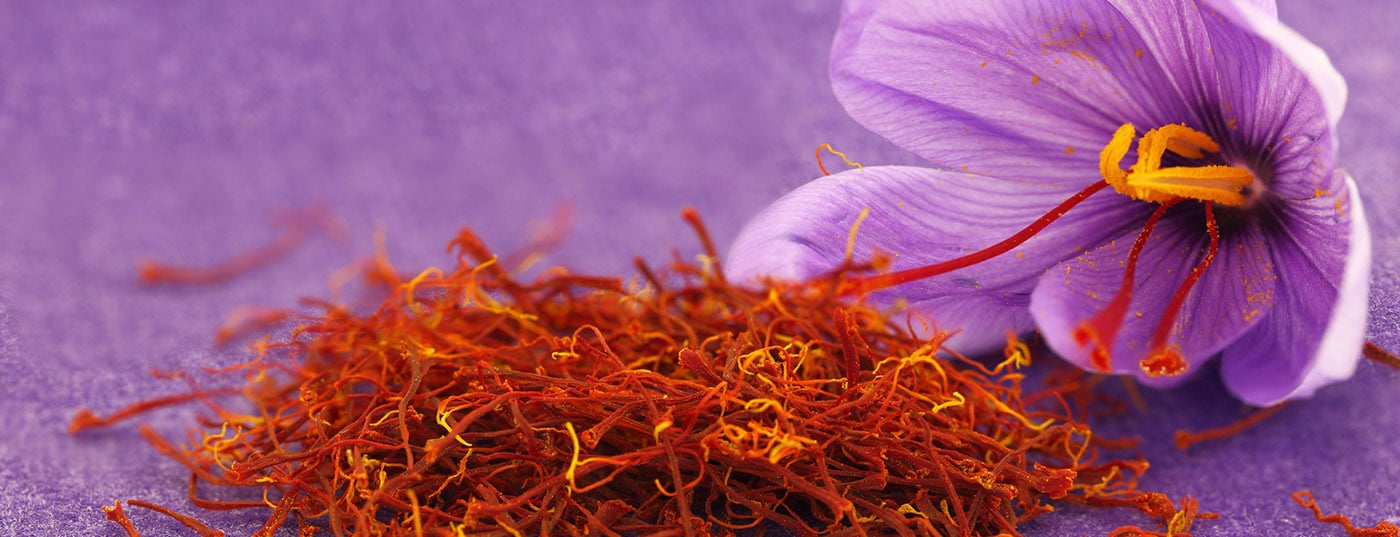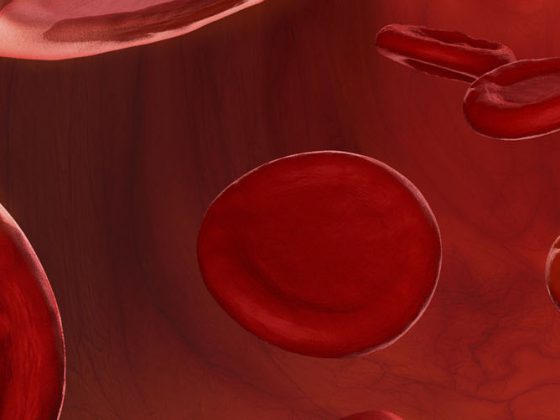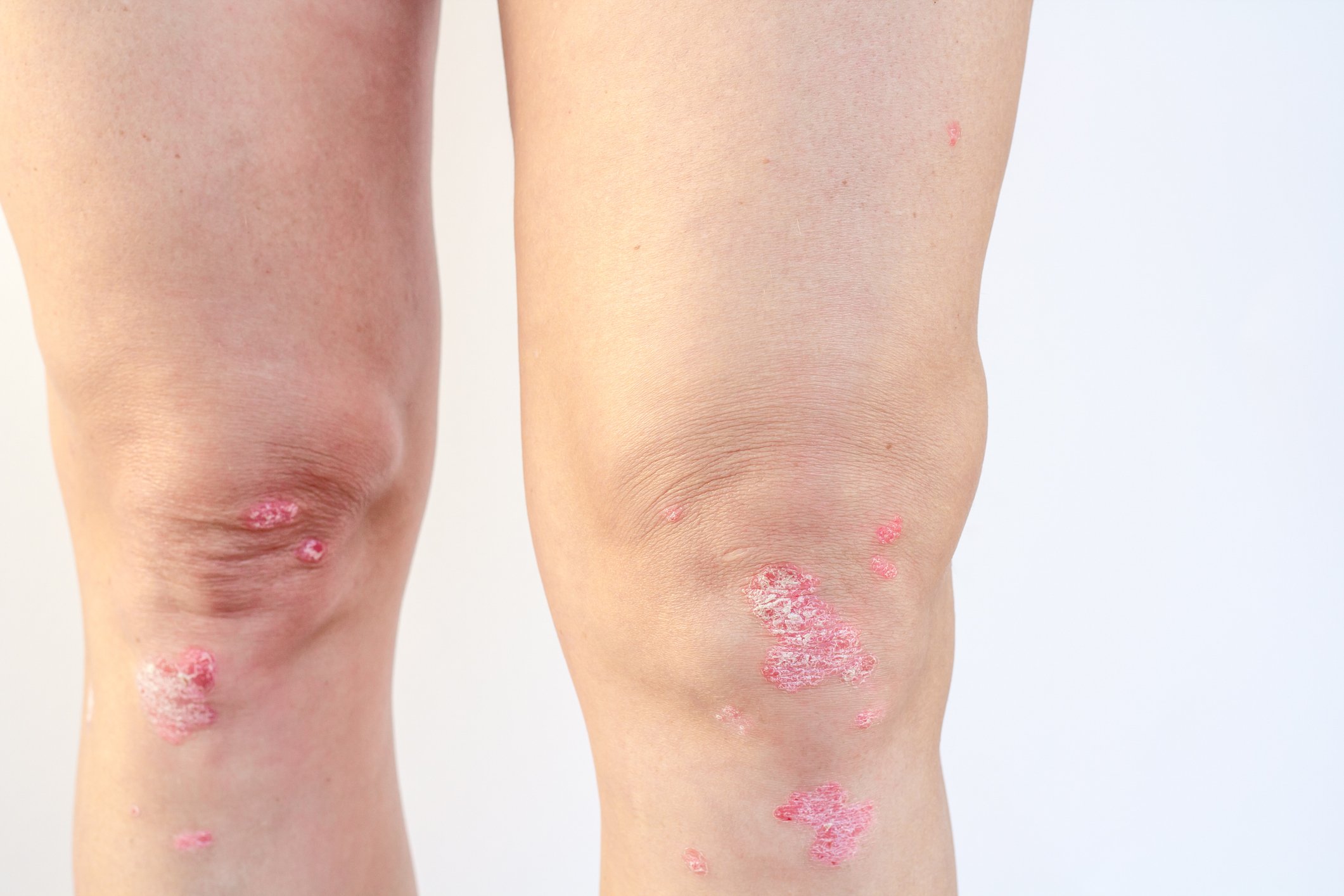Medical history: A 21-year-old farmer with mild atopic eczema since the age of ten, oral allergy syndrome (OAS) after eating fresh apples, hazelnut, and spinach, and perennial allergic asthma for one year suffered a severe anaphylactic reaction with vigorous abdominal cramps, laryngeal edema, and generalized urticaria a few minutes after eating a risotto meal with porcini mushrooms. He had to be hospitalized as an emergency and on admission he collapsed. The emergency physician found a pulseless, cyanotic patient with dilated pupils, but pupils responsive to light stimulation. Successful resuscitation measures were performed with cardiac massage, intubation, oxygen and fluid administration, and intravenous administration of epinephrine, corticosteroids, antihistamines, and theophyline. Later, the patient was referred to the allergy ward of the University Hospital Zurich.
Allergological clarification
Prick tests with routine inhalation allergens (Alyostal, Stallergenes Laboratoires) showed polyvalent sensitization to various pollens, house dust and storage mites, animal epithelia, and the mold Cladosporium. Prick-to-prick tests with fresh apple, carrot, potato and celery (raw and cooked) were strongly positive (++) (wheal >5 mm). Scratch tests were performed with the ingredients of the risotto meal and were negative with cooked rice, two types of mushrooms (Boletus and Agaricus), and garlic and onion. Since a genuine Ticino risotto or a “risotto alla milanese” is colored and flavored yellow with saffron (Fig. 1), a saffron sachet with ground saffron was purchased and the contents also tested in the scratch test. There was a strong positive reaction (++; wheal >5 mm).

Total serum IgE was 2440 kU/l. CAP results (FEIA, Pharmacia Diagnostics, Sweden) showed polyvalent sensitization to house dust mites (Dermatophagoides pteronyssinus >100 kU/l), birch pollen (52.9 kU/l), Cow epithelia (13.0 kU/l), Mugwort pollen (10.2 kU/l), and various spices and foods according to the table 1, but were negative for the fungi Boletus, Agaricus, and Coprinus, and cheese. In collaboration with Pharmacia Diagnostics, Sweden, the patient serum was tested in the RAST system with two saffron products: one from Sweden, purchased in a spice store, and a pure product provided by McCormick, Switzerland. Both gave a positive result of 3.5 and of 4.3 PRU/ml (class 3), respectively. A RAST inhibition experiment in patient serum with saffron, involving the McCormick disc and the commercial saffron product, showed near complete inhibition (approximately 90% with the 1:1 extract) and 50% inhibition with a 1:140 dilution. With the McCormick product, SDS-PAGE (“sodium dodecyl sulfate polyacrylamide gel electrophoresis”) and immunoblotting revealed five IgE binding bands with molecular weights ranging from 40 to 90 kDa.
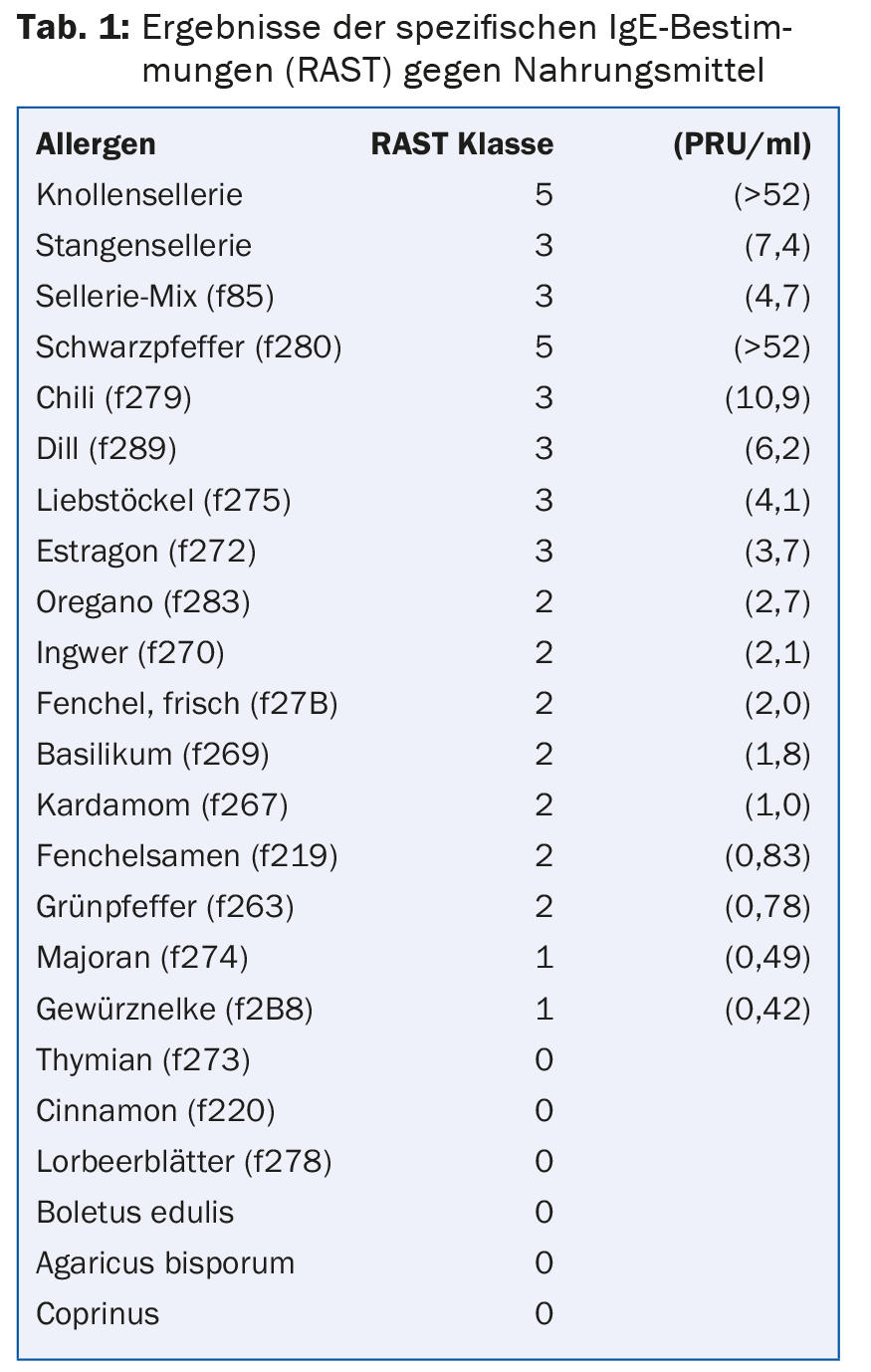
Diagnosis
The diagnosis was anaphylaxis to saffron in a polyvalent atopic.
Comment
Based on our observations of several cases of ingestive allergy to porcini mushrooms (Boletus, Porcini) [1], we were surprised to find that the corresponding skin and blood tests were negative. In our search for the triggering allergen, we have now tracked down saffron. To our knowledge, allergic reactions after consumption of saffron had not been described in the medical literature at that time [2]. Shortly after our publication, Spanish authors observed the occurrence of rhinoconjunctivitis, bronchial asthma, and skin itching in a worker in the spice industry after inhalation exposure to saffron powder [3]. This patient had a positive conjunctival provocation test with saffron pollen. In 50 saffron industry workers, three subjects were also sensitized to saffron pollen and saffron stamp proteins and had positive prick tests and positive specific IgE [3]. Later, the same group of authors described the occurrence of “airborne contact dermatitis” after aerogenous exposure to dust from saffron nodules [4].
Other authors have found specific IgE to saffron proteins in the range of 11-70 kDa in the serum of individuals sensitized to saffron [5]. A 15.5 kDa profilin-like allergen was identified from pollen and pistils, but with low levels [6]. Many proteins in the 27-67 kDa range were possibly expressions of cross-sensitization with Lolium, Salsola, and Olea [4]. Currently, the determination of specific IgE against saffron is also possible using a commercial test (ImmunoCAP f331).
Subsequently, the following allergens were characterized by different research groups: Cro s 1, of unknown biological activity; Cro s 2, a 12-16 dDa protein, a profilin; and Cro s 3, a 9 kDa protein, a lipid transfer protein [6–8]. If there is an analogy to other food allergens, the lipid transfer protein Cro s 3 is most likely to be responsible for sensitive allergic symptoms.
The saffron plant (from Arabic/Persian za’farān; scientific name Crocus sativus) is a species of crocus that blooms purple for a few weeks each fall (Fig. 2) .
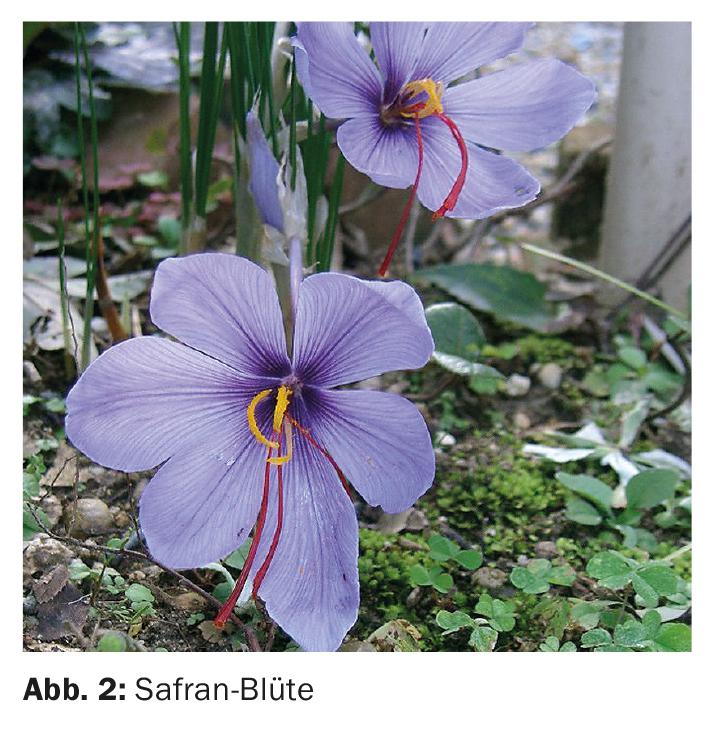
The spice is obtained from the pistils of its flowers (Fig. 3) . Each flower contains a pistil, which branches into three stigmas. Only these pistil threads are used dried as a spice. It takes about 150,000 to 200,000 flowers from a cultivated area of about 10,000 square meters to obtain one kilogram of them. Harvesting is done by hand, one picker manages 60-80 g per day. Therefore, saffron is one of the most expensive spices [9]. Saffron is often mistakenly placed in the bulbous category, but saffron is a tuberous plant.
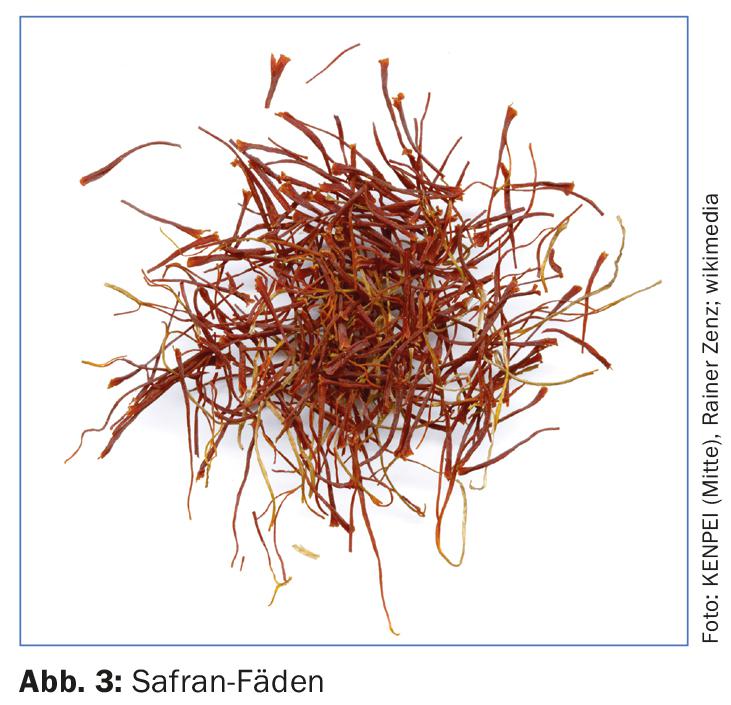
Saffron is grown in Afghanistan, Iran, in Kashmir and in Europe, mainly in the Mediterranean region. A small cultivation area of 18,000 square meters exists in Switzerland in the village of Mund, in Valais, where between 1.5 and 2 kg of saffron are harvested per year – depending on the weather and temperatures.
Saffron contains carotenoids, especially the water-soluble dye crocetin, which is glycosidically bound to the disaccharide gentiobiose in the plant. This compound is known as crocin. The dishes flavored with saffron are intensely colored golden yellow. It also contains the bitter substance saffron bitters, from which the aldehyde safranal, responsible for the saffron aroma, is partially formed during drying. Other aroma compounds include isophorones. In Europe, well-known dishes that contain saffron are bouillabaisse, “risotto alla milanese” and paella, as well as cakes and liquors. Saffron is also used for homeopathic remedies and is monographed in the European Pharmacopoeia.
Finally, to history: Zeus is reported in a legend of Greek mythology, he slept on a bed of saffron. And already the Phoenicians used saffron as a healing and seasoning agent. They had probably gotten to know him from the Indians. Even in ancient times, it was a luxury item. There were heavy penalties for counterfeiting or blending saffron. Rich Romans sprinkled saffron threads on their wedding beds – possibly an explanation for the Latin saying “dormivit in sacco croci” (“he slept in a bed of saffron”), referring to a state of carefree cheerfulness. It is certain that in many cultures it was the custom to dye the wedding veil yellow with saffron.
Literature:
- Torricelli R, Johansson SGO, Wüthrich B: Ingestive and inhalative allergy to the mushroom Boletus edulis. Allergy 1997; 52: 747-751.
- Wüthrich B, Schmid-Grendelmeier P, Lundberg M: Anaphylaxis to saffron. Allergy 1997: 52: 476-477.
- Feo F, et al: Occupational allergy in saffron workers. Allergy 1997; 52: 633-641.
- Martínez FV, et al: Occupational airborne contact dermatitis from saffron bulbs. Contact Dermatitis 2007; 57: 284-285.
- Varasteh AR, et al.: Specific IgG antibodies (Total and Subclasses) against saffron pollen: A Study of their correlation with specific IgE and Immediate skin Reactions. Iran J Allergy Asthma Immunol 2007; 6(4): 189-195.
- International Union of Immunological Societies Allergen Nomenclature: IUIS official list www.allergen.org/2010.
- Varasteh AR, et al: Cloning and expression of the allergen Cro s 2 Profilin from Saffron (Crocus sativus). Allergol Int 2009; 58(3): 429-435.
- Gómez-Gómez L, et al: Involvement of lipid transfer proteins in saffron hypersensitivity: molecular cloning of the potential allergens. J Investig Allergol Clin Immunol 2010; 20(5): 407-412.
- http://de.wikipedia.org/wiki/Safran
DERMATOLOGIE PRAXIS 2015; 25(2): 16-18
DERMATOLOGIE PRAXIS 2018 Special Edition (Anniversary Issue), Prof. Brunello Wüthrich

